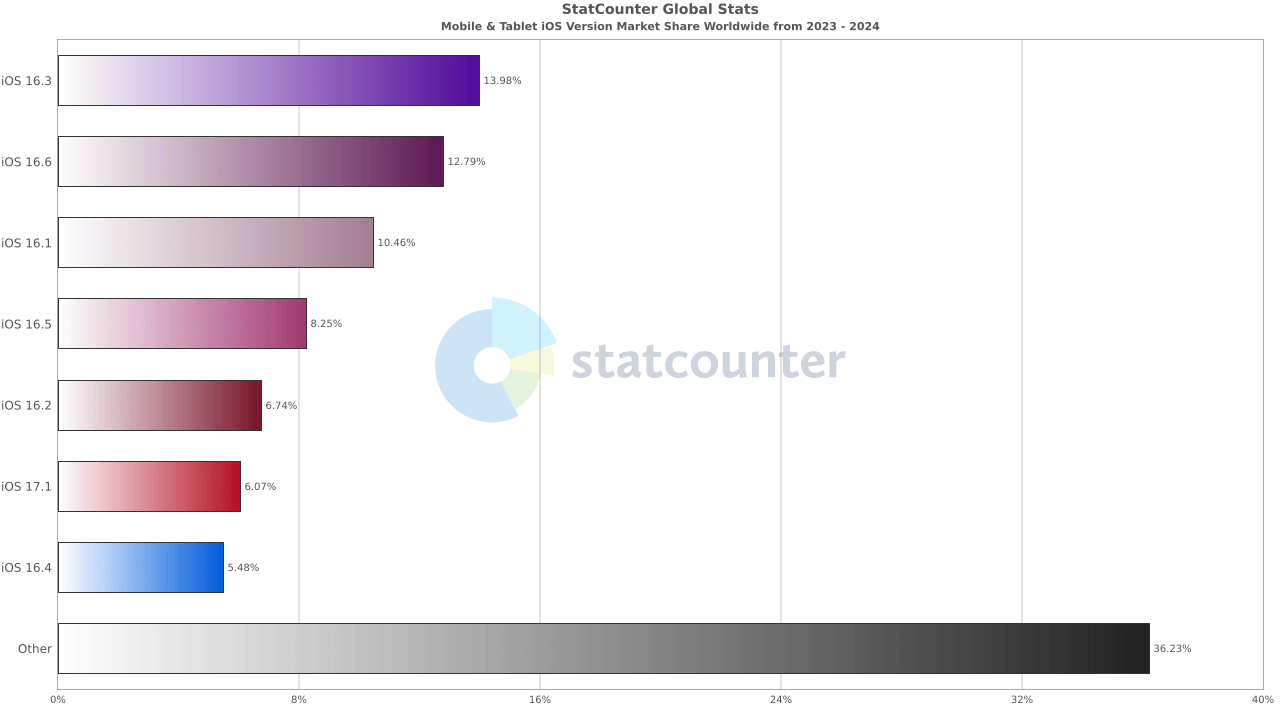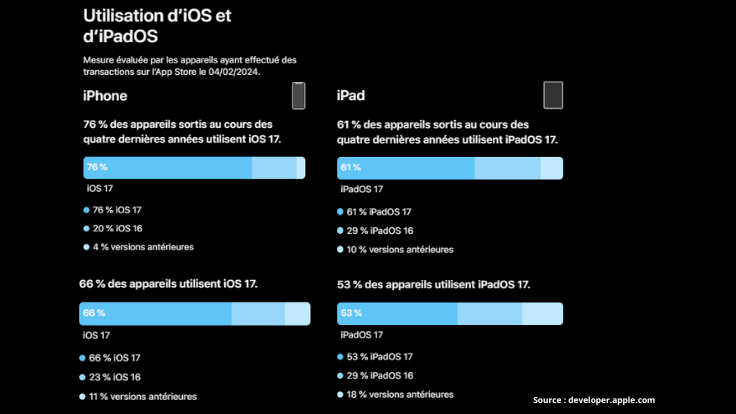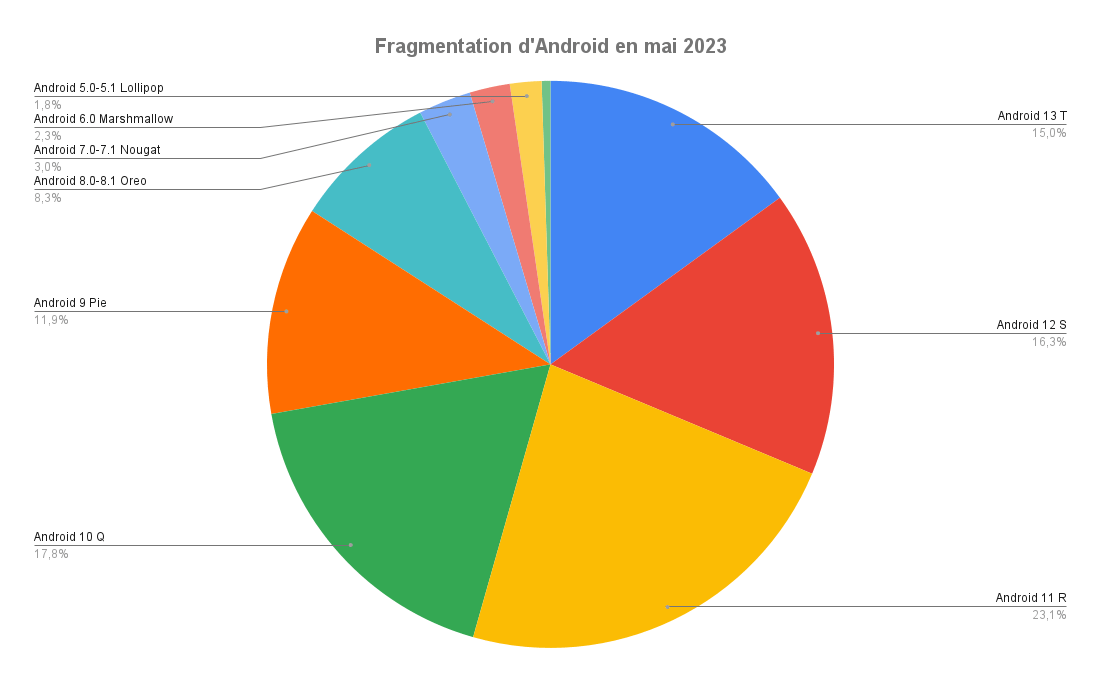WebP: Usage, Compatibility… Do You Really Need to Convert Everything to WebP?
Rédigé le 29/02/2024 par Noah Sturtzer
WebP: Usage, Compatibility… Do You Really Need to Convert Everything to WebP?
First, a Reminder: What is WebP?
WebP: An eco-friendly image format in search of universal support.
The digital world is evolving at a rapid pace, and with it, the technologies that underpin our online experience. One of these evolutions concerns the WebP image format, praised for its lightweight nature and positive impact on digital ecology. However, its universal adoption is hindered by challenges related to browser and operating system compatibility.
WebP is an image format developed by Google in 2010 with the aim of reducing image file sizes while preserving high visual quality. It uses more efficient compression than older formats like JPEG and PNG, making it ideal for improving website performance while reducing their ecological footprint.
Its ecological benefits.
Bandwidth Reduction: By decreasing image sizes, WebP contributes to more efficient bandwidth usage, thereby reducing energy demand from servers and networks.
Faster Page Loading: Websites using WebP images tend to load faster, enhancing user experience while consuming less energy.
What is WebP Compatibility on Browsers?
While WebP offers undeniable ecological advantages, its universal adoption is hindered by compatibility issues. To date, WebP support varies across browsers and operating systems.
✅Full Support:
Google Chrome: Fully compatible for a long time due to its origin at Google.
Opera: Full compatibility, following Google Chrome’s trend.
Microsoft Edge: Full support since the migration to Chromium.
☑️Partial Support:
Firefox: Partial support with recent versions, but not yet universal.
Safari: Support is under development but not yet integrated into all versions. Note that from versions 14 to 15.6, it is fully supported but requires macOS 11 Big Sur. Below version 14, or from 14 to 15.6 without macOS 11 Big Sur, the WebP format is not supported.
❌No Support:
Internet Explorer: No support, but given Microsoft’s end of support for it, this is not surprising.
Operating Systems:
Older operating systems may not offer native WebP support.
☑️Windows: WebP is supported on newer Windows versions, but compatibility may vary.
☑️macOS: Newer macOS versions support WebP, but older versions may require updates.
☑️Linux: WebP support depends on the desktop manager and browser used.
What is WebP Compatibility on Smartphones?
What Percentage of iPhones are Incompatible with WebP?
-
Compatibility issues start from iOS 14 (see list below).
-
There are 2 billion active devices (iPhones, Macs, iPads, Apple Watches) worldwide, including 1 billion iPhones.
-
Around 30% of smartphones in circulation worldwide are iPhones in 2023.
Thanks to efficient update deployment at Apple, the vast majority of smartphones are compatible (64% considering only the categories represented below, i.e., from iOS 16.4 onwards).
The goal is to determine the number of iPhones that are not WebP compatible, those on iOS 14 or older.
This first Statista graph shows that the percentage of iPhones with an iOS version below 16.4 is 36.23%. Figures from 2024.

Source: Statista
In this second graph, Apple stated that 11% of remaining devices running versions earlier than iOS 16 include devices running on iOS 15 and iOS 14. 18% on iPad. Figures from 02/04/2024.

Source: developer.apple.com
In this last graph, according to Telemetrydeck, the share of devices with iOS equal to or less than 14 would represent 0.10% of versions still in use to this day. Figures from December 2023.

Source: telemetrydeck.com
For the following, we will use this 0.10% percentage of iPhones that are not WebP compatible.
What Percentage of Android Phones are Incompatible with WebP?
-
WebP is fully supported on 4.4-111, partially supported on 4.1-4, and not supported on versions 2.1-3 of the Android browser. Compatibility issues arise below Android 4.4 KitKat (see list below). Android 4.4 KitKat, the last compatible Android version, accounted for 0.50% of the Android market share in 2023 according to Frandroid’s study.
-
There are slightly over 6 billion active Android devices.
-
Around 70% of smartphones in circulation worldwide are Android devices in 2023.
Below, there is a graph indicating the most used versions of Google’s mobile OS, with Android 11 R leading the pack.
The goal is to determine the number of Android smartphones that are not WebP compatible, those on 4.1-4 or older.
In the following graph, the small light green portion, Android 4.4 KitKat represents 0.5% of active Android smartphones in the market in May 2023.

Source: Frandroid
For the following, we will use this 0.50% percentage of Android devices that are not WebP compatible.
Which Smartphones are Specifically Affected?
Smartphones affected by compatibility issues are listed below in a non-exhaustive manner:
| SAMSUNG | IPHONE | HUAWEI | LG | OTHERS |
|---|---|---|---|---|
Galaxy S3 mini / Galaxy Trend Lite / Galaxy Trend II |
6 / IPhone6Plus / IPhone5s / IPhone5c / IPhone5 / IPhone4s / IPhone4c / IPhone3GS / IPhone3G IPhone (gen1) |
Ascend Dz Ascend G74 Ascend Mate |
LG Enact Optimus F3 Optimus F3Q Optimus F5 Optimus F6 Optimus F7 Optimus L2 II Optimus L3 II Optimus L3 II Dual Optimus L4 II Optimus L4 II Dual Optimus L5 II Optimus L5 II Dual Optimus L7 II Optimus L7 II Dual |
Archos 53 Platium / Caterpillar Cat B15 / Faea F1 / HTC Desire 500 / Lenovo A820 / THL W8 / UMi X2 / Wiko Cink Five / Wiko Darknight /Sony Xperia M / ZTE Grand S Flex / ZTE Grand X Quad v987 /ZTE V956 |
In 2024, How Many Smartphones are Incompatible with WebP?
There are 8.59 billion smartphones in circulation worldwide according to Statista in 2022. Based on the figures mentioned earlier, 30% are iPhones and 70% are Android devices.
After a quick calculation, we arrive at a total of 2,577,000,000 iPhone devices in circulation and 6,013,000,000 Android devices.
Considering that 0.10% of iPhones in use are on an incompatible iOS version, this results in over 2 million incompatible iPhones (2,577,000 devices).
Considering that 0.50% of Android devices in the market are incompatible, this results in over 30 million incompatible Android devices (30,065,000 devices).
Over 32 Million Incompatible WebP Smartphones, … How to Use WebP While Keeping Content Accessible to Older Devices?
Although WebP is a promising eco-friendly image format, its universal adoption requires ongoing collaboration between developers, browsers, and operating systems. In the meantime, content creators must balance the ecological benefits of WebP with the need to ensure a consistent user experience across all devices and browsers. Using WebP in the current context deprives a certain number of users of access to content, and partially encourages hardware renewal, which, it is worth noting, is the largest contributor to digital pollution.
One possible solution to address this compatibility issue requires a bit of code.
-
First, offer another format (jpg, png, or gif) for the images you have.
-
Then, use the HTML <picture> tag, which will replace the traditional <img> tag.
-
This tag allows listing the formats available to the browser for a single image.
Thus, the browser will display the image it can use (WebP as a priority).
Here is what it could look like:
<picture> <source srcset="logo.webp" type="image/webp"> <source srcset="logo.jpg" type="image/jpg"> <img src="logo.png" alt="Yoma-Web Webp Logo" title="Yoma-Web Webp Logo"> </picture>
As you can see, this solution is quite simple to implement.
Conclusion
In 2024, we see that WebP compatibility is increasing! Smartphones below iOS 14 and Android 4 versions will not be compatible, yet they represent over 32 million smartphones (32,642,000), or 0.38% of smartphones in circulation.
One can also play with the code to initially offer two formats, to not leave any devices behind, and eventually transition to using only WebP. The simplest solution would still be for WebP to be compatible with all browsers, thanks to increasing longevity in updates across different systems, and we may achieve that over time.
Sources:
In the meantime, you can decarbonize your website, and we will make your images more suitable (sizes/resolutions/formats) for your site, so that it pollutes less!